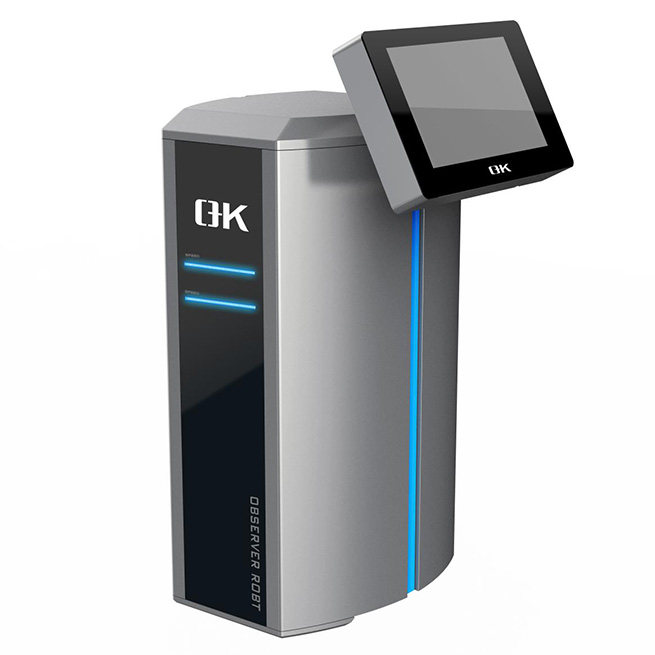In today's fast-paced production environments, precision and quality are paramount. The integration of print inspection capabilities into web inspection systems emerges as a transformative advancement, revolutionizing quality assurance practices across industries from packaging to printing. This convergence of technologies empowers manufacturers with unprecedented accuracy and efficiency, ensuring the delivery of flawless products to consumers.

Evolution of Integrated Systems:
Manufacturers, driven by the demand for perfection in printed goods, have expanded the capabilities of web inspection systems by integrating print inspection functionality. This collaborative approach enables not only the assessment of material integrity but also the scrutiny of printed content's accuracy and quality.
Key Features of Integrated Systems:
Comprehensive Inspection:
Integrated systems offer complete inspection capabilities, allowing simultaneous examination of both material surface and printed content. This holistic approach ensures the detection of printing issues, such as misprints, color disparities, and registration irregularities, alongside physical defects in the material.
Real-time Detection:
Leveraging advanced imaging technology and intelligent algorithms, integrated systems enable real-time detection of printing flaws as materials traverse the web inspection setup. This proactive approach empowers manufacturers to promptly identify and rectify defects, minimizing the production of subpar or non-compliant products.
Multi-parameter Inspection:
Integrated systems can scrutinize multiple parameters of printed content, including text, graphics, barcodes, and color fidelity. This comprehensive assessment ensures adherence to design specifications and regulatory standards, guaranteeing superior quality in the final product.
Adaptability:
Highly adaptable to diverse printing processes and materials, integrated web inspection systems accommodate variations in substrates, inks, and printing methods. Their flexibility allows for customization to meet specific industry requirements and application needs, ensuring versatility in quality assurance practices.
Data Analytics:
Integrated systems generate valuable data insights, capturing information on defect rates, production trends, and performance metrics. This data-driven approach facilitates root cause analysis, process optimization, and continuous improvement initiatives, driving operational excellence.

Benefits of Integration:
Improved Quality Control:
By amalgamating web and print inspection capabilities, manufacturers ensure the highest levels of quality and accuracy in printed goods. Detection and correction of defects in material integrity and printing result in products that meet stringent quality standards and exceed customer expectations.
Reduced Waste and Rework:
Real-time defect detection minimizes the production of flawed or non-compliant items, reducing waste and the need for costly rework. Early intervention and corrective measures prevent defective products from progressing further in the production pipeline, optimizing resource utilization.
Enhanced Efficiency:
Integrated inspection systems streamline quality assurance processes, reducing inspection times and manual intervention. This enhances production efficiency, shortens cycle times, and boosts throughput, leading to significant cost savings and operational enhancements.
Compliance Assurance:
Integrated printing quality inspection systems ensure compliance with regulatory requirements and industry standards by validating the quality and legibility of printed text. This is particularly critical in regulated sectors such as pharmaceuticals and food packaging, where precise adherence to regulations is imperative.
Increased Customer Satisfaction:
By consistently delivering products of superior quality and accuracy, manufacturers enhance customer satisfaction and foster brand loyalty. Integrated inspection systems uphold brand integrity, mitigate the risk of recalls or returns, and elevate the overall customer experience.
Industrial Applications:
The integration of print inspection capabilities into web inspection systems finds diverse applications across industries, transforming quality control and production processes. From packaging to printing, the technology revolutionizes defect detection, ensuring precision and reliability in manufacturing operations.
Future Innovations:
As technology advances, further innovations in print inspection integrated with web inspection systems are anticipated. Enhanced imaging resolution, artificial intelligence algorithms, and machine learning techniques will enable more precise flaw detection, increased accuracy, and greater adaptability to evolving production needs.
In conclusion, the integration of print inspection capabilities into web inspection systems marks a significant milestone in manufacturing quality assurance. By harnessing the strengths of both technologies, manufacturers can achieve unparalleled levels of defect detection, print accuracy, and production optimization, setting new standards of excellence in the industry.









Comments (0)